On Monday morning I met Phil at Times Square, then off we set to see what we could find. We were heading for Fung Fai Terraces as an appetiser, to look at the old buildings there.
We followed Wong Nai Chung Road along the west side of the racecourse - the side where all the cemeteries are. The road was widened when the Aberdeen Tunnel flyover was built in the 1970s, pushing back the cemeteries' walls. This gateway at St. Michael's cemetery looks as though it pre-dated the move, and was successfully dismantled then rebuilt afterwards:
Here's a sleepy view of this area from the 1920s:
When we reached the Sanatorium, we followed the road round to the right, till we came to Village Road. On the right-hand side of the road is a big old retaining wall, with a gap in the middle and stairs leading up either side. Here's a view from the mid-1920s, showing the wall and stairs (the photo shows it from the opposite direction, so here the walls and stairs are on the left of the road):
Above the wall are the Fung Fai Terraces, built on two levels. The buildings on the lower level are all complete in this photo. Behind them you can see another retaining wall and stairs, with the upper terrace formed, but nothing built yet.
The buildings on the lower terrace were completed first, but also re-developed first. Today only #2 remains from the original lower terrace buildings, just one half of one building. Several old buildings are still standing on the upper terrace though, so that's where we went.
From Village Road we climbed the first staircase, then cut between the buildings (a small shelter for the security guard marks the passageway) to reach the upper staircase.
Look down at the steps, and we can see the land is made up from two lots, with the dividing line running right down the middle of the staircase:
Then look up. There's a small ledge built into the wall. Did it used to support one of those stone signs that showed the name of the terrace?
Up the stairs, and then a pause to admire the two pairs of original buildings that still stand here. The pair on the right are numbers 23 & 24.
Hmm, looking at the photo now, it doesn't look as attractive as I remember, with all those air-cons, peeling paint, and aluminium window frames! But look a little closer and there are all sorts of pretty details:
The other pair of original buildings are numbers 16 & 17, along to the left. See how high the ceilings are?
They've left the upper windows open to let the hot air out:
The floors still in good shape too:
Here's the wall that runs along in front of 16 & 17. Would any wall experts reading like to estimate a date from the style?
Walking down the slope from the upper terraces, Phil spotted a small concrete balcony that juts out. We didn't have any good ideas for when and why that was built.
At the bottom of the slope, this entrance still has its stone sign in place:
Back out onto Village Road, we followed the road up to the junction with Shan Kwong Road. On the corner is this building that reminds me of the building at the bottom of Old Bailey Street. :
Here's the front view. Was there was another half to it originally?
And over across the street, one of the old T-shaped iron street signs:
We turned right, to walk up Shan Kwong Road. If you live near here you probably don't think these old-style signs are an endangered species. Shan Kwong Road has two!
The sign is on the wall of Hong Kong's most colourful school building:
It is a Buddhist primary school, standing next to and downhill from the the Tung Lin Kok Yuen, a Buddhist educational institution for women. Both were founded by Lady Clara Hotung, Sir Robert Hotung's second wife.
Between the two sites is a narrow lane, with a much more subdued appearance.
The Star of David on the gateposts is the clue to what's inside. The gateposts mark the entrance to the Jewish Cemetery.
At first glance the gates look as though they are locked with a heavy chain, but in fact they just need a good push to open - the cemetery is open to the public. It's much smaller than the cemeteries down the hill, so it doesn't take long to walk around.
Here are the names that caught my eye:
Alexander is the grandfather of Gwulo contributor Geoff Wellstead. He has written about his grandfather, and also posted many interesting photos of Hong Kong from the 1920s - 60s from his family collection.
The grandest graves in the cemetery both belong to the family of Emanuel Belilios. The older grave is for his son, David:
And the newer is for his widow, Sema.
(The inscription describes her as the ".. dearly beloved relict of ...". "Relict" is an old-fashioned word for "widow".)
Here's the oldest stone in the cemetery, built into the back wall. It isn't a gravestone, instead it commemorates the opening of the cemetery in 1855:
Just one letter difference in the family name, this is the grave of Jacob Sternberg, who died aged 15 months old. We've seen the name Sternberg before, as his father Moritz published many of the old postcards of Hong Kong that we've seen here on Gwulo.
Next are several members of the Weill family, starting with Maurice. He died young, aged 34.
Nearby is the grave of his younger brother Albert:
But it's Albert's wife Rosie we've heard most about, as she is mentioned in several of the accounts of wartime life in Hong Kong.
Rosie survived the war, but two of her sons did not. Maurice died in Shanghai, while Leon died as a POW in Shamshupo:
Another grave nearby records two brothers from the Goldenberg family who both died in late 1941.
Isaac was killed in action during the fighting on the 23rd of December. But his younger brother Charles had died the previous month, probably from illness as Hong Kong was still at peace then.
The last name I recognise is Siegfried Komor:
Probably one half of Komor & Komor , the "Art & Curio Experts":
Leaving the cemetery, we walked a short way uphill to admire the Tung Lin Kok Yuen.
The roof is covered up for maintenance at the moment, but you can see its colours are much plainer than the school next door.
Back down hill, and walking along Tsui Man Street there's a view of the back of 54, Village Road.
The front looks even better, but we were men on a mission so the front view will have to wait for another day. We were heading uphill to that grid of streets with the botanical theme: Briar Ave., Broom Rd., Green Ln., etc, to admire some of the buildings up there.
We made a minor detour into Hip Wo Lane, to take a peep into its Air Raid Tunnel entrance:
And spot another old street sign as a bonus.
Then we carried on up to the corner of Holly Road and Blue Pool Road, to see the first of those low-rise buildings.
A house with a garden! Don't see many of those in Hong Kong.
Walk on up to the junction of Broom Road and:
Where you'll see this three-storey building with round windows and lots of curves:
Something unusual in these roads is that although many of the buildings here have been re-developed, they've kept to the height of the old building. That's even more unusual than a house with a garden - any ideas why this has happened?
There's a mirror-image of this building further along the street, just next to the Green Lane staircase.
If you compare the old and the new buildings, you can see why there is the temptation to re-develop. By cutting away the platform and lowering the ceilings, they've managed to squeeze five storeys into the space of three!
Before we leave the area, let's just check my favourite bollards in Hong Kong are still there at the top of the Green Lane staircase.
All present and correct, we may proceed.
Walking down Blue Pool Road, Phil spotted this odd ruin.
There's quite a drop inside, and you can see the curve of the original retaining wall in the background.
These days it is used as a rubbish tip, but if you look at the girders that hang down from the ceiling, and especially at the rollers on the girder, it looks as though it was once used as a workshop.
Does anyone know it's history?
At the junction with Ventris Road, steps lead up to a small temple. I've never been in to take a look, so we put that right. The main temple is dedicated to Tam Kung:
And a few steps further up the hill there is a small Tin Hau temple:
They were built in 1901, when the original village was still standing. Remember that 1920s photo of Fung Fai Terraces we saw earlier? It was cropped from this larger view:
The terrace is on the left of the photo, while the jumble of low roofs on the right was the old Wongneichong Village.
We walked back down from the temple, and set off for Caroline Hill via Ventris and Link Roads. A foundation stone at St. Paul's school caught my eye. We've been talking about Douglas Crozier recently, and he laid this stone in 1960.
Coming down the other side of Link Road, Phil stopped to take a photo of a school with the catchy name:
The Po Leung Kuk Gold & Silver Society Pershing Tsang School.
Phil is working his way through the movies that have been filmed in Hong Kong, identifying the locations they used for filming, then writing about them on his website. He spotted this school building in Double Impact - Jean Claude Van Damme (1991). At the bottom of the hill he pointed out the old CAS HQ and EMSD buildings next to the South China Athletic Association. They were used in Cracker: White Ghost - Robbie Coltrane (1996).
Turns out neither of us had ever been to the Race Course Fire Memorial. We knew it was nearby, so out came the online map, which showed the path to it started by the Hong Kong Stadium. When we got there we found a helpful sign:
Except the sign says it shuts at midday, and my phone showed it was 11:56! Surely they'll let us in if we can get there before 12? Off we set, huffing and puffing up the steps. Would we make it in time?
Turns out we needn't have worried because:
- Nobody came to lock the gate at 12, and
- Even if they had, you can just step over the low wall next to the gate!
It's an impressive structure:
It commemorates the 600+ people who were killed in the 1918 tragedy when fire broke out in the temporary stands at the racecourse.
By then we were ready for lunch, so walked over to Tai Hang. Both the places I had in mind were closed, but walking back and for meant we got to see a few more old buildings:
I hope you've enjoyed the walk. If you spot anything interesting when you're out and about in Hong Kong, please take a picture and let us know.
Regards, David
|
New on Gwulo.com this week:
Looking for information (photos, facts, memories, etc.) about:
|
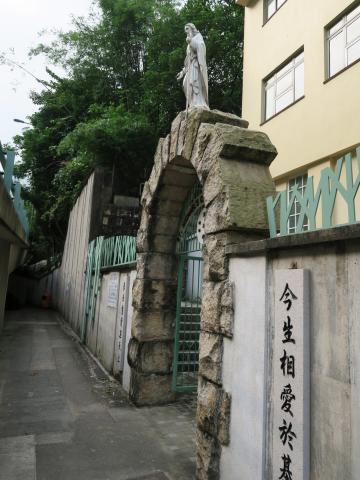
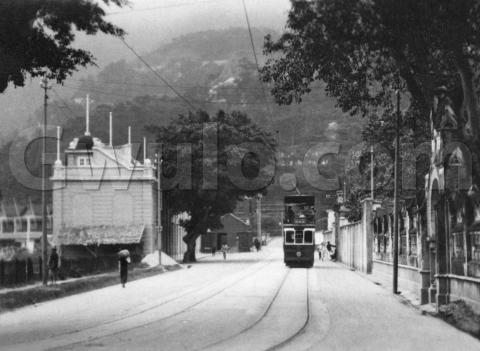
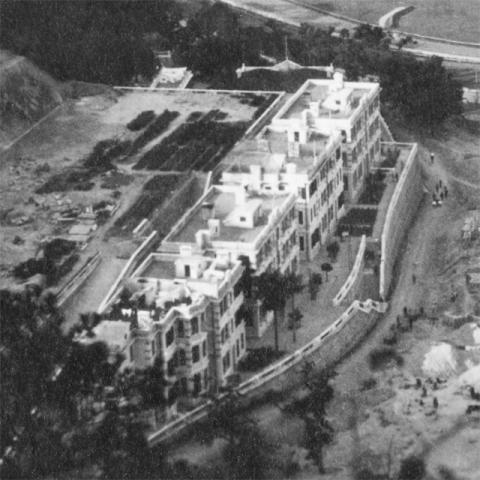
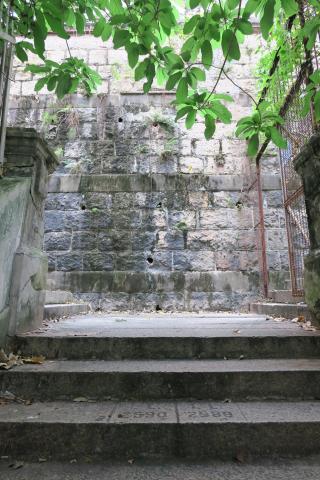
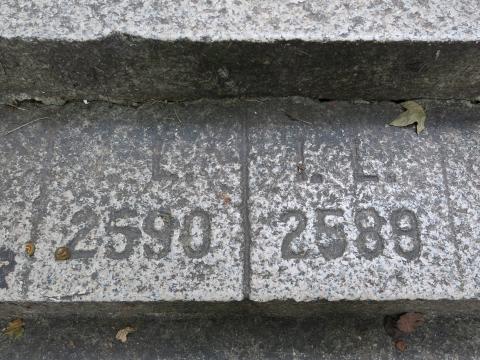
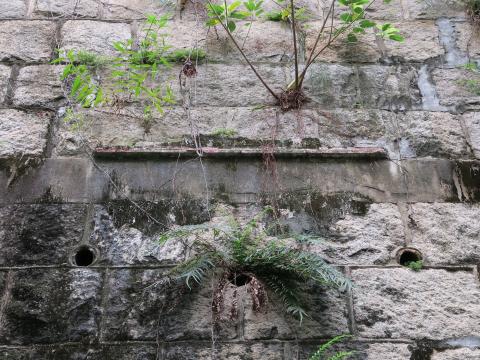
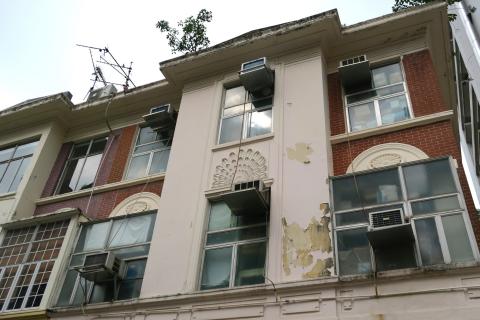
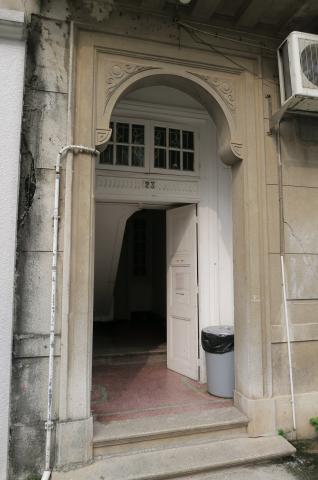
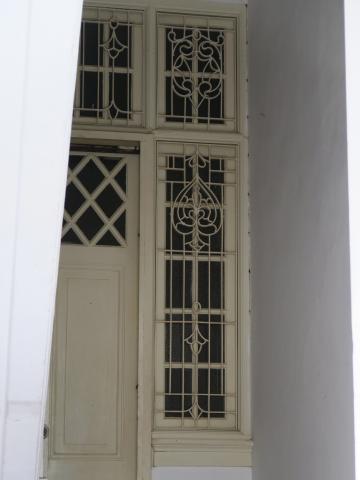


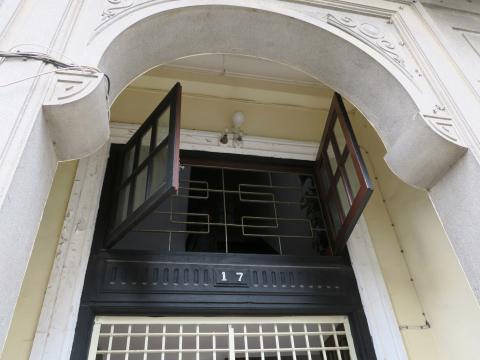
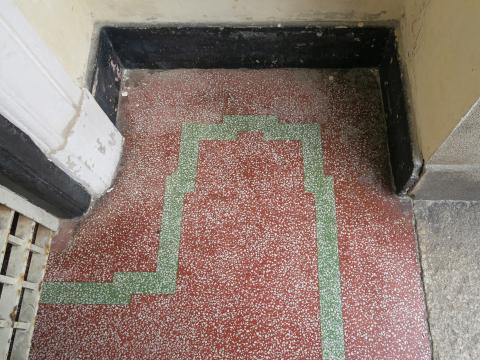

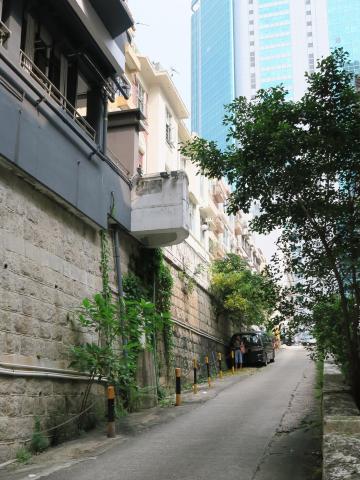

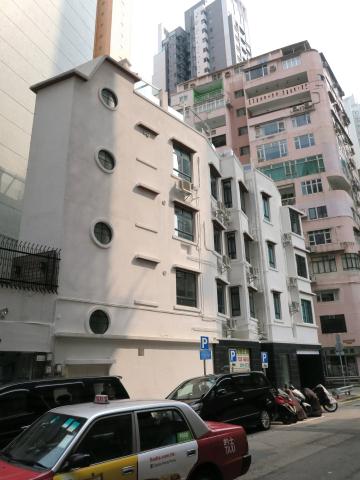
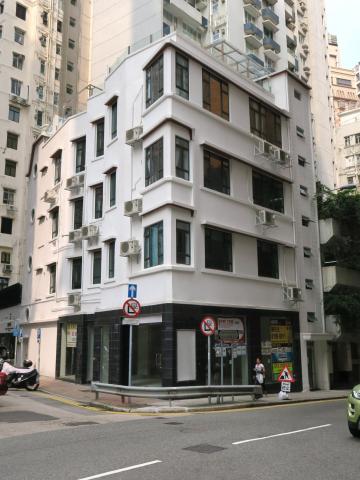
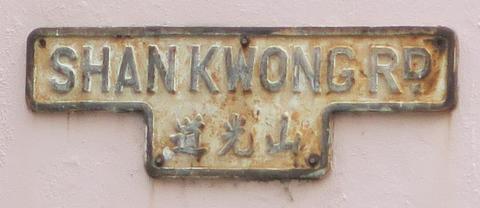

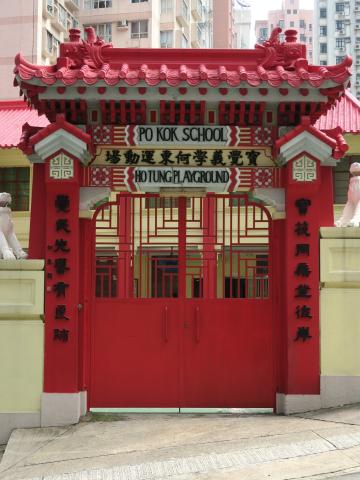
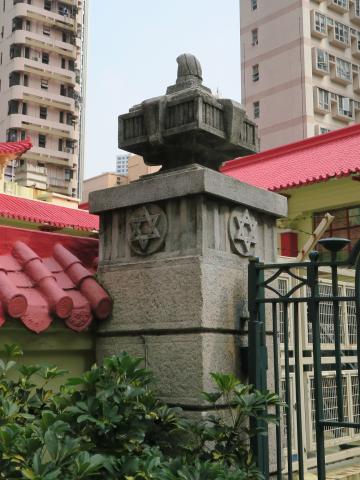
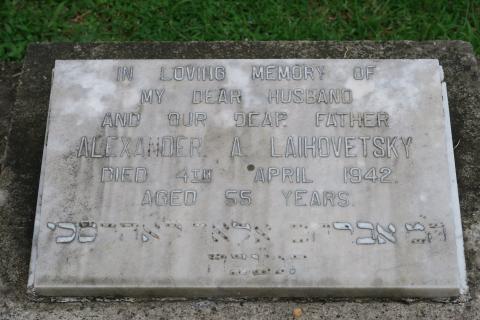
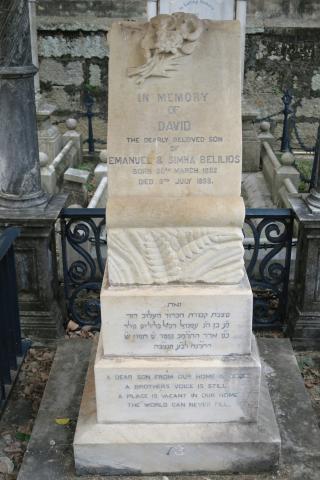

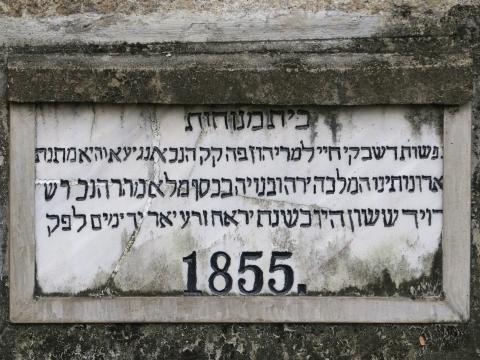
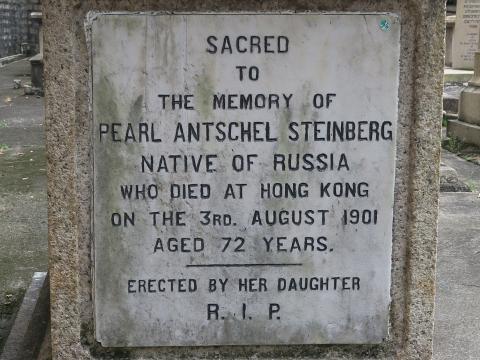
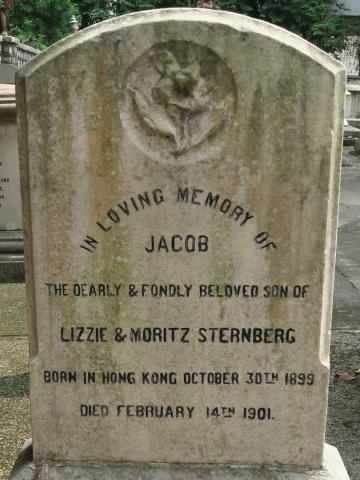
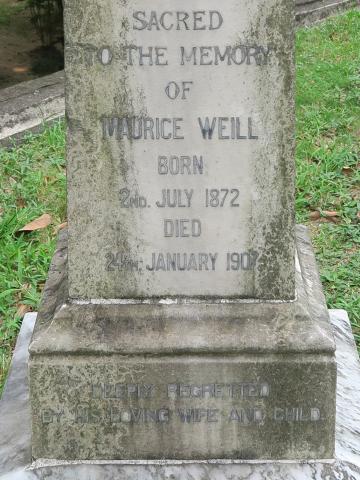
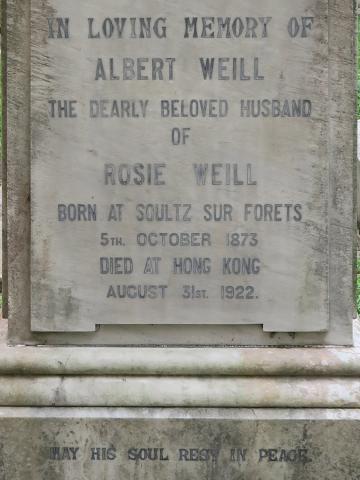


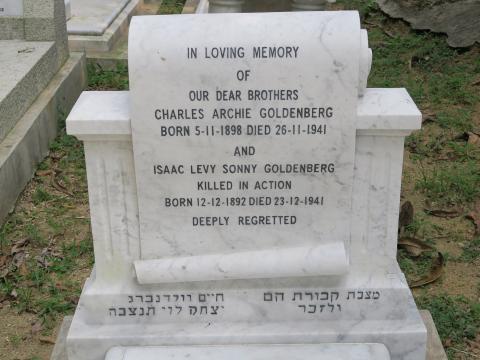
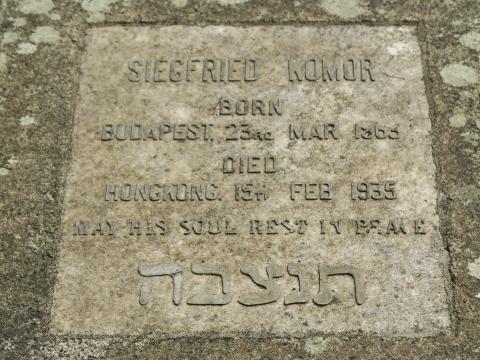
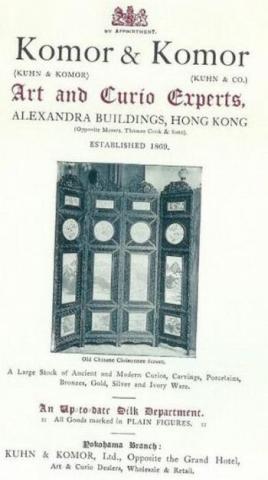
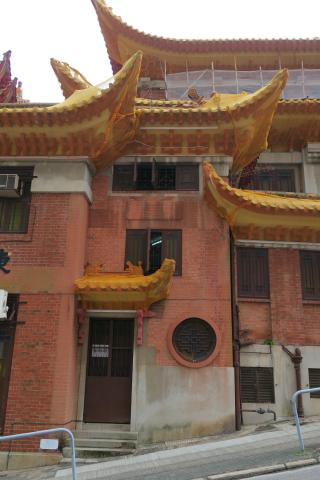
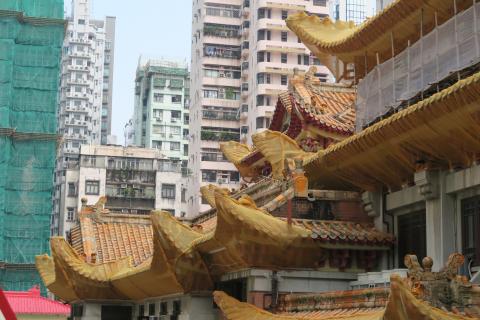
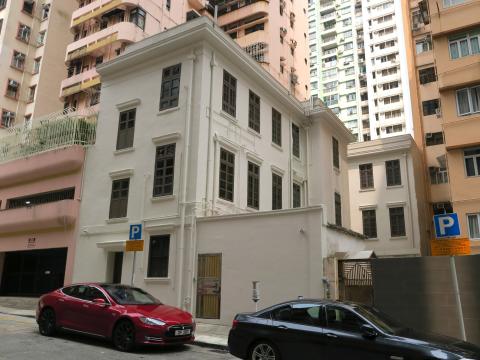

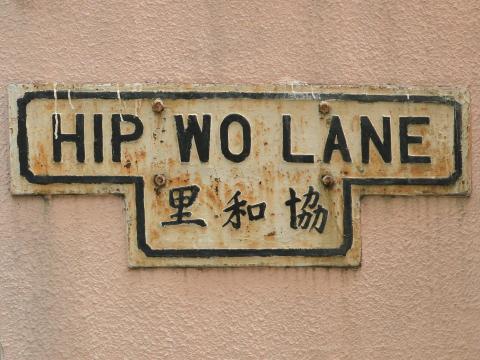
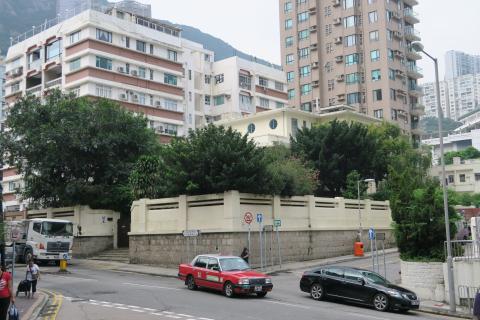
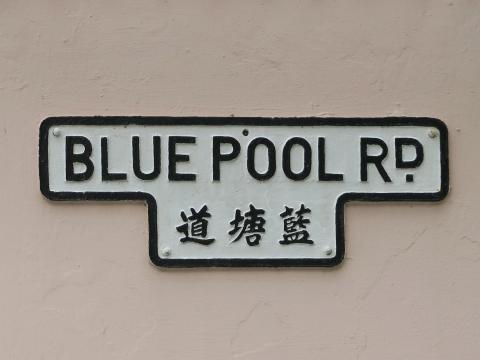

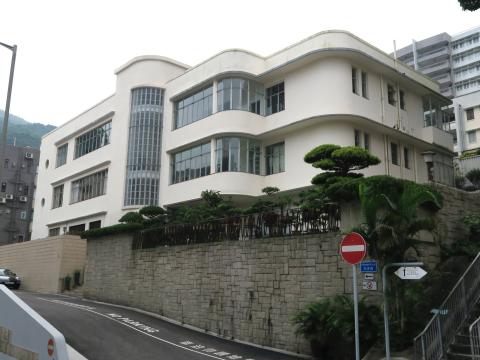
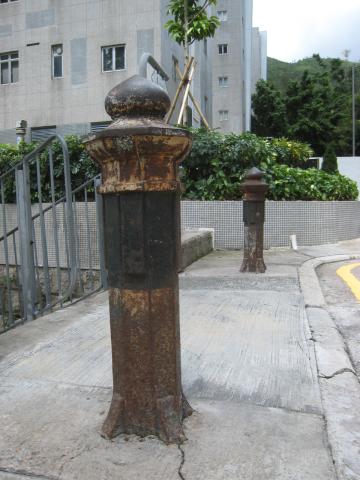
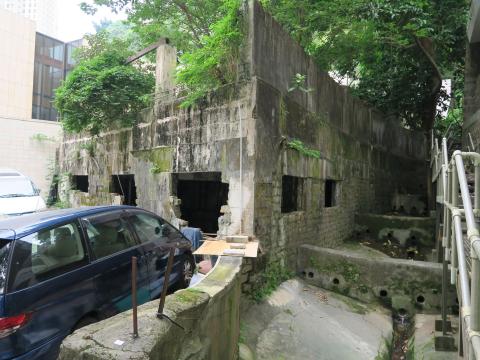
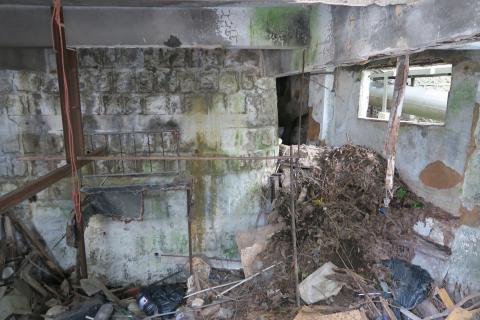
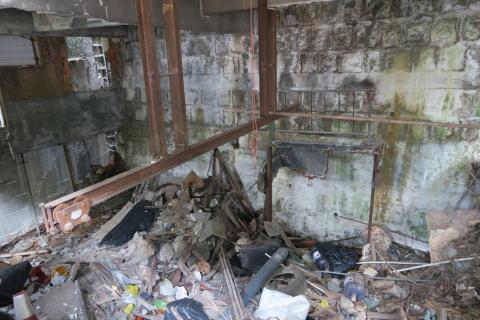
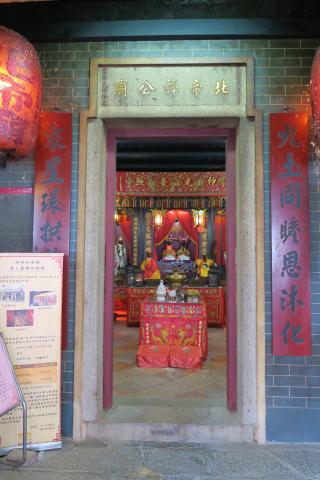
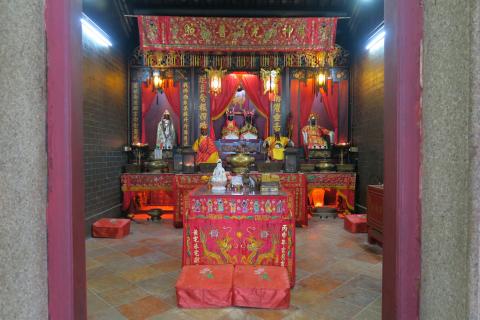

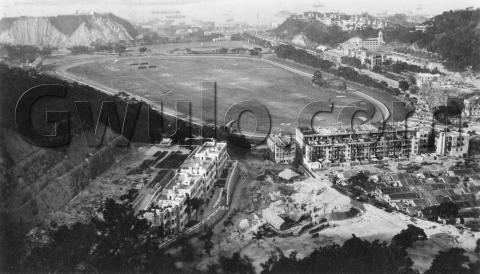
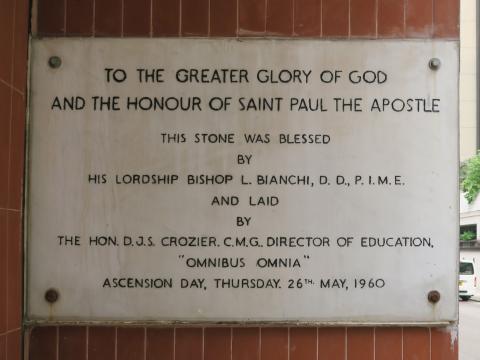
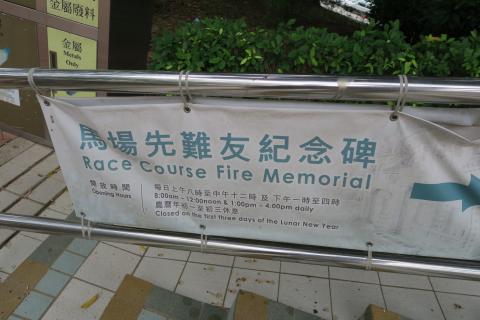


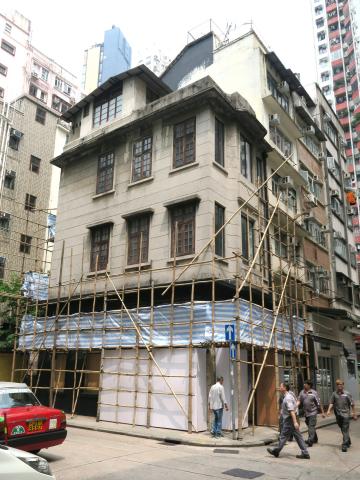
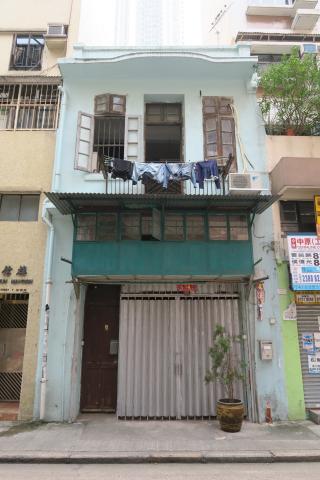
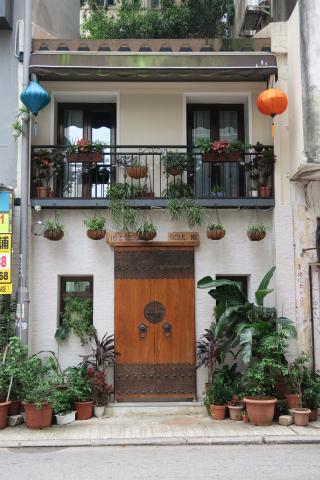
Comments
Re: Happy Valley
Hi David,
Since you were up at Shan Kwong Road, I would like to add some tid bits.
T
Thanks T, we didn't pass that
Thanks T, we didn't pass that ramp on this walk, but I know the one you mean:
When I'd seen it before I thought it was unusually wide for a Hong Kong alley, but didn't know why. Now I do - thanks for the explanation!
Regards, David
Style of the wall
Art Deco in 1930s:
Ruin
I've been sent a message by a person who told me they used to live at the property that the ruin was once part of. The original address is #39 Blue Pool Road and apparently it was a large art-deco style mansion block similar to the building that currently stands at number 51 - 53. The recollection is that the ruin was once an attached garage area. They moved away in the 1970's. I wonder if the building that currently stands at #41 (called Smiley Court) was built on part of the site formerly occupied by #39. If so then the missing building was probably demolished sometime before around 1977.
horses
I seem to remember seeing a picture of some ma fu walking several horses up Shan Kwong Road past the school and Tung Lin Kok Yuen. Will try and track it down.
re: Happy Valley ruin
Hi the whole site was empty for years until they built the fancy houses lining Blue Pool Road - it's unclear whether the ruin was part of that site or the one replaced by the adjacent block in the late 70s. You can see some of the original buildings here http://gwulo.com/atom/18628
former stables
as seen here https://www.flickr.com/photos/25534111@N07/2428083860/
"the building at the bottom of Old Bailey Street"
I've just realised I linked that text to the wrong building. It should have linked to 20, Hollywood Road, which is the one I thought looked a bit similar:
Corrected now.
Low-rise buildings around Green Lane
Up above I asked:
Something unusual in these roads is that although many of the buildings here have been re-developed, they've kept to the height of the old building. That's even more unusual than a house with a garden - any ideas why this has happened?
Thanks to Sandy Madar and Gordon Robinson, who replied by email. Here is Sandy's message:
I heard some stories about this area from my older generation. If I am correct, the 3-storeys houses are on Briar Ave. just off the sharp bend at Blue Pool Rd. These are all own by ex-Govt. officers in The HK Govt.The leases in these houses are restricted to 3-storeys but the best part is that these houses leases do give them the right to have an unrestricted view of the harbour. Those on the Green lane just above Briar Ave., most those I believed are also own by ex-civil servants. Those on Briar Ave are the Administration officers or senior in the service as compared to those on Green Lane who are more junior grade. Also across these 2 streets on the sharp bend on the hill side, those 3 storeys houses are owned by ex-civil servants.
And here is Gordon's:
The buildings near the junction of Blue Pool and Broom roads are subject to a PD (for Principal Datum, the level from which all official heights are measured) height limit which, as you say, allows additional stories (subject to complying with other Building Regulations) but no increase in height.
Of the two older buildings with curved windows, the one on the left (120 Blue Pool Rd) houses the former home of the late Sir Oswald Cheung, barrister and Senior Chinese Unofficial Member of the Legislative Council 1978-81. That on the right is owned by the family of the late Sir Tang Shiu Kin. Its garden is worth a look next time you are in the area; some of it can be seen from the road.
The newer building between these two was originally of matching style with its neighbours. It was rented to various well-known HK companies for mainly expatriate accommodation before being redeveloped into its present form in the early 1990s.
Sorry, David, I have confused
Sorry, David, I have confused you by using the abbreviation PD (for Principal Datum, the level from which all official heights are measured) which you quite reasonably took to mean Planning Dept. The height limit is therefore an absolute one, rather than being height above a road or a number of storeys and, as Sandy Madar says, is in the Government Lease.
Just to clarify, the newer building in your photo between the two older ones has the address 1 Broom Rd, and the Tang family house is numbers 3-5 Broom Road, while the left-hand house is 120 Blue Pool Road.
Thanks for the clarification
Thanks for the clarification. I've updated the previous comment to match. regards, David
Tai Hang village houses; Mount Caroline Cemetery
Thank you for sharing the record of your wanderings with us. There are two interesting landmarks in the neighbourhood that you may want to pass by on your next visit.
(1) Village houses in Tai Hang -- There are a couple of village houses on Sun Chun Street near its junction with Wun Sha Street. As far as I know, they are the only two remaining village houses in the area. The main entrances are actually on an unnamed lane, and the back of the houses face Sun Chun Street.
(2) Mount Caroline Cemetery -- The Race Course Fire Memorial is a part of Mount Caroline Cemetery (咖啡園墳場). Many graves were moved when the Government Stadium was built in the 1950s, but some graves remain near Broadwood Road (accessible through a lane behind No. 38). It is recommended that one does not go there alone, as the cemetery is dark abnd quiet.
Next visit
Thanks C, good tips.
Mt Caroline Cemetery
Very good advice about the cemetary. I have unknowingly stumbled into the cemetary once. Going up a path at the southern back of HK Stadium and about half way to Broadwood Road I found myself surrounded by graves left right and centre. They were unattended and many more must have been covered by thick undergrown. A lot of trees as well, shadowy and leaves rustling, very creepy. I did not know it has a name until now. Thanks!
Nelson
Fung Fai Terraces used to house St. Margaret's Primary School
My parents moved to No. 87 Wong Nai Chung Road in Happy Valley when I was about two years old. The 6-storey building is still there as of today (August 2020).
In early 1960s, I started attending St. Margaret's (English) Primary School which was then situate at Fung Fai Terraces. I attended from Primary One to Primary Four until the school decided to relocate to Stubbs Road because Fung Fai Terraces would undergo a major redevelopment. I switched to another primary school "New Method College" on Link Road and have never revisited Fung Fai Terraces since then.
Re: Fung Fai Terraces used to house St. Margaret's Primary Sch
Thanks Jimmy for sharing information about the history of Fung Fai Terrace.
St. Margaret's College was at 1E Shiu Fai Terrace from 1966 to 2007 when the school closed. It was located between Wah Yan Collge, Hong Kong (on Mount Parish) and Pun U Association Wah Yan Primary School (at 1F Shiu Fai Terrace until moving to Tanner Hill in April 2019). Currently, the Raimondi College Primary Section occupies the old St. Margaret's College building.
I believe the New Method College building at 3 Link Road was demolished in the mid-1980s and adjacent school building at 101 Caroline Hill Road were demolished in the early 1990s, both to make way for residential development. Please let us know more about this New Methold College campus. Thank you.
New Method College in Causeway Bay
I only spent three years at New Method College for attending Primary Five and Primary Six (with the third year as a repeater for having poor academic results in the second year ).
).
According to Wikipedia, the block on Caroline Hill Road was established in 1952 (before I was born). The block on Link Road was established in 1956. However, I could not remember whether the two blocks were physically linked to each other or not. Anyway, I have painted the two areas in apple green as shown below.
The entrance on Link Road was for the Primary Section while the entrance on Caroline Hill Road was for the Secondary Section. A few cars including a school bus with a capacity of about 50 seats often parked inside the tiny campus of the Primary Section. There was no playground for physical education, so we had to use the nearby sporting ground at South China Athletic Association for our P.E. lessons. The principal of New Method College, Dr. Wilson T. S. Wang (王澤森博士), was very enthusiastic in sporting events. In addition to a school marching band that performed frequently at various events, we, pupils of New Method College, were asked for once or twice to perform in "a large human matrix" exercise in a public event at the Hong Kong Government Stadium. Pupils were arranged to sit on a numbered seat, filling all the rows in two or three sections. Both boys and girls wore the same white shirts and navy-blue jackets as our school uniform in the wintertime. When the left side and the right side of the jacket were tightly brought together, it would appear to be a black dot from a far distance. When the left side and the right side of the jacket were unfolded to our back, the white shirt was exploded and it became a white dot from a far distance. Each pupil was assigned a cheat sheet containing a set of numbers. When a number was called, those having that number on their cheat sheet would unfold their jackets, thus making many different patterns/words as seen from the opposite side of the stadium. I would greatly appreciate if someone could show us a photo of this type of human matrix in this website.
There is no longer any more New Method College. The last one on Man Fuk Road in Homantin was closed down in 2012 and the building has now become Stamford American School.
P.S. I have just uploaded a photo in which you can see a partial view of New Method College on Caroline Hill Road. Please search for this title "New Method College on Caroline Hill Road and its members of the Road Safety Patrol".
Re: New Method Collage in So Kon Po
Hi There,
I believe that they were linked at the back, very close to the slopes. I had a faint impression of going there for an Inter-School bridge tournament and went in through the Caroline Road entrance. When asking about the venue we were led upstairs to a classroom on the Link Road side. That was mid 1970's I think.
Talking about New Methods, other than atheletes, they are also famous for their marching bands with fancy uniforms like extra extended lapels or shoulder pads, that used to hook onto other objects if their marches mingles with other bands.
T
Re: New Method Collage in So Kon Po
Thank you, Jimmy and tngan, for sharing your memories. I attended the kindergarten of New Method College but my memory is quite vague. The kindergarten was on the ground floor of the Caroline Hill Road building. There were moveable partitions separating an area into different 'classrooms'. There was a stage in a big room and there might have been a slide indoors. We played with toy blocks during breaks. I thought the buildings on Caroline Hill Road and Link Road were separated. There were school buses parked in the lane between the college and 5 Link Road, a 6-storey residential building.
It is interesting that the location of the college was variably described as being in Causeway Bay, So Kon Po and Happy Valley! It is a quiet spot within a short walking distance to the shopping district in Causeway Bay, therefore it was logical that the college became residential buildings.
Dear Jimmy,
Dear Jimmy,
I am interested in the history of St. Margaret's English Primary School and thank you for your valuable first-hand information.
You may also be interested in the advertisement I came across in the historical newspapers. I think the building at Fung Fai Terrace still exists today. Do you have any photos from the old days? Maybe we could cross-check it.
No photos from the old days
Hello, Chelsea.
Unfortunately, I do not have any photos from the old days.
Early this century, I was living in Village Tower for several years and the building is just opposite to Fung Fai Terrace. While my memory was vague, I still remembered when I was a pupil at St. Margaret's, there was a playground in front of the school building which also served as an assembly place. It was at the playground that the headmaster (a Catholic priest) announced to the pupils and their parents about the planned relocation of St. Margaret's English Primary School from Fung Fai Terrace to Shiu Fai Terrace on Stubbs Road.
From the balcony of my dwelling in Village Tower, I did not see the playground anymore, so presumably both the playground and the school building had been dismantled during the redevelopment.
By the way, you have mentioned about an advertisement in the historical newspapers. Where can I see it?
Re: No photos from the old days
Hi Jimmy,
Thank you for sharing this memory. This is a historical newspaper from the South China Morning Post about school registration and vacancies. It verified that the St. Margaret's English Primary School was first established at 2 Fung Fai Terrace before their relocation to Stubbs Road. I may also share the current photo with you this weekend.
Re: No photos from the old days
Hello, Jimmy. This is the current appearance of the building.